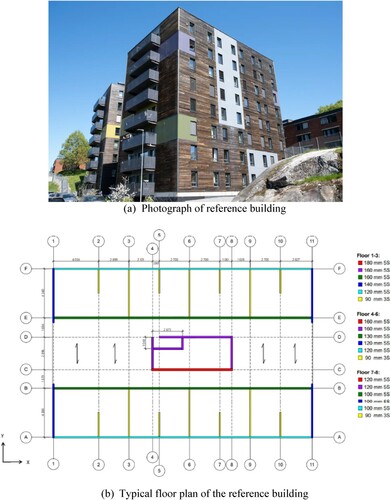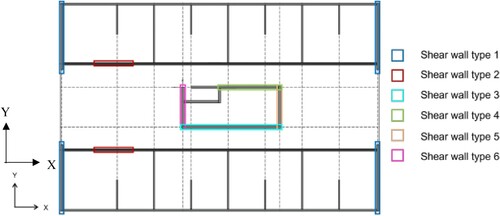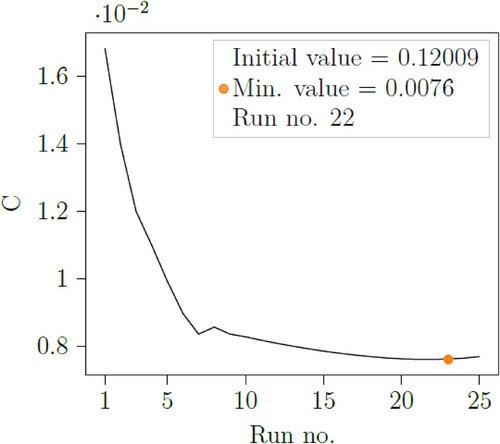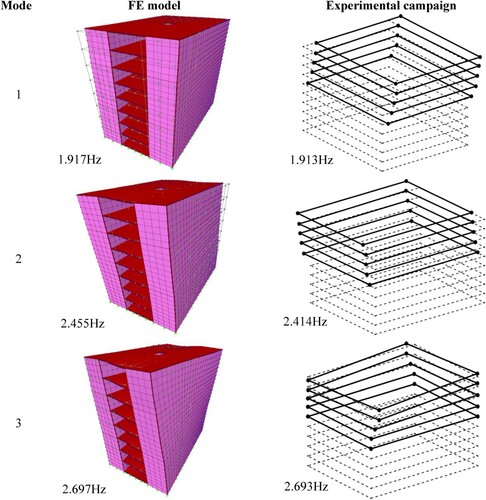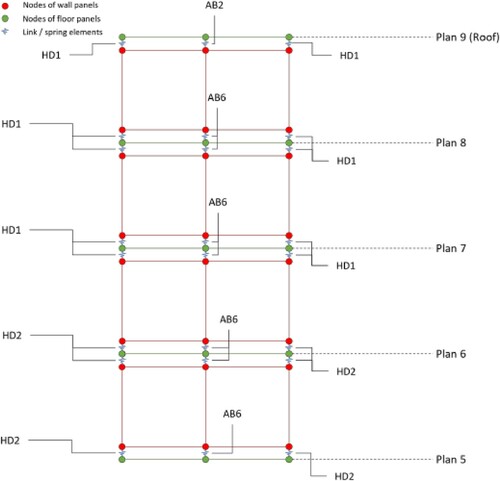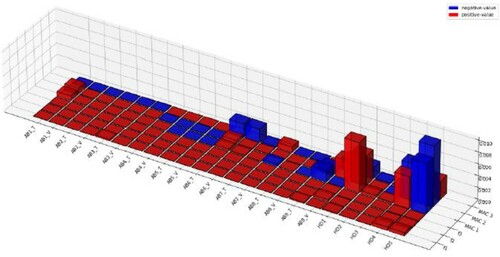Figures & data
Table 1. Specifications of shear walls and connectors.
Table 2. Description of Python scripts.
Table 3. Reference (seed) properties for CLT elements*.
Table 4. Seed values for loads and material density.
Table 5. Initial and updated parameter values with an absolute change greater than 1.0% during sensitivity analyses.
Table 6. FE models versus experimental natural frequencies.
Table 7. Stiffness of angle bracket and hold-down anchors in FE analyses.
Table 8. Overview of the types of angle brackets employed in the FE analyses.
Table 9. Effects of variations of plan geometry on natural frequencies and mode types.
Table 10. Number of modes contributing to 90% mass participation.
Figure 10. Variations in eccentricity versus corresponding masses and natural frequencies, respectively.


